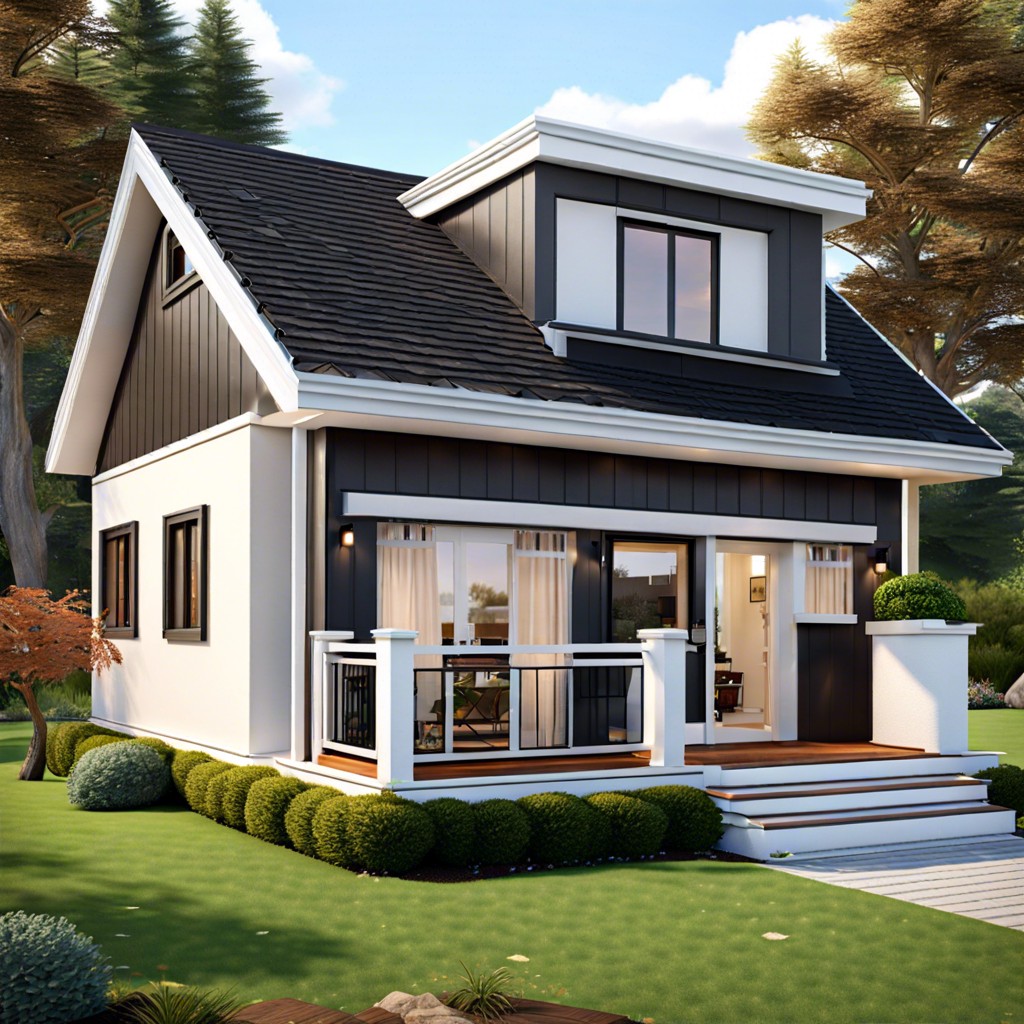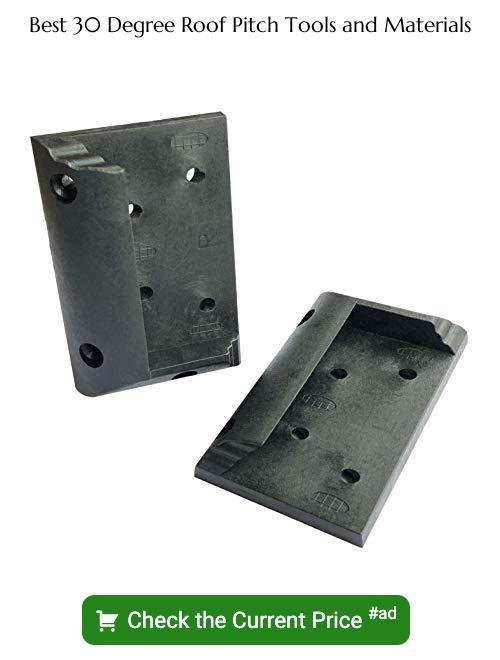Last updated on
Curious about a 30-degree roof pitch? This article covers what it is, its advantages, and its impact on your home.
Key takeaways:
- 30-degree roof pitch is a good balance for many homes.
- Calculate the rise and run to determine the pitch.
- Consider climate, material, ventilation, building codes, and budget.
- Suitable for shedding snow, draining rainwater, and providing ventilation.
- Enhances aesthetics and allows for interesting design choices.
Definition of Roof Pitch
Roof pitch measures the steepness of a roof, expressed as an angle or a ratio. Think of it like the Goldilocks of your house’s hat; not too flat, not too steep, just right.
To calculate it, you need two things: the rise (how much the roof height increases) and the run (the horizontal distance) of the roof. A roof pitch of 30 degrees is on the moderate side—neither a mountain peak nor a table top.
Here are a few key things to know:
- It’s often expressed in degrees but also as a ratio (7: 12).
- Degrees give you a clearer picture, particularly if math isn’t your best friend.
- Roof pitch affects water drainage, snow load capacity, and even your attic space.
So, while pitches can vary wildly, a 30-degree pitch strikes a good balance for many homes. It’s like the middle child of roof pitches—often overlooked but reliably solid.
Calculating Roof Pitch

Grab your protractor and a bit of math aptitude—calculating a roof pitch isn’t as terrifying as it sounds. Here we go:
- Measure the Rise and the Run: The rise is how much your roof increases vertically for every 12 inches of horizontal run. Imagine it’s the lazy sibling who prefers lying down flat while the rise enthusiastically climbs up.
- Do the Math: For a 30 degree roof pitch, you’ll whip out your calculator. The tangent of 30 degrees (0.577) is the ratio of rise to run. So, if your run is 12 inches, the rise is roughly 6.93 inches.
- Tools Make It Easier: Modern roofing calculators online can save your brain cells. Just plug in your run, and voila! Instant rise measurement.
- Double-check: Always double-check your measurements. Measurement mishaps lead to roofing disasters, and nobody wants unexpected skylights.
Now you’re ready to dazzle with your roof pitch prowess!
Factors to Consider for a 30 Degree Roof Pitch
When it comes to choosing a 30-degree roof pitch, think about a few key factors.
First, ponder the local climate. A 30-degree pitch is generally great for shedding rain and snow but might not be the best for regions with heavy snowfall. You wouldn’t want to transform your roof into a snow park, right?
Next up, consider the material. While many roofing materials work with a 30-degree pitch, some, like slate or tile, might shine brighter. Get it wrong, and you’ll end up with a roof that looks like it’s ready for a medieval jousting match.
Ventilation is another important factor. Proper airflow in the attic ensures your home doesn’t turn into a sweltering sauna in summer. A good pitch helps, but proper ventilation design is crucial.
Then there’s the matter of local building codes. Regulations can vary widely; it’s not one-size-fits-all. You don’t want to end up on a first-name basis with your local building inspector, trust me.
Lastly, your budget. Higher pitches can mean more materials and labor. So, make sure your wallet is on board with your plans.
Remember, a 30-degree roof pitch involves more than just angles and degrees; it’s about finding the right fit for your home and lifestyle, without losing your sense of humor along the way.
Suitability for Different Climates
When considering a 30-degree roof pitch, climate plays a crucial role. In snowy regions, a steeper pitch prevents snow accumulation, which can otherwise lead to roof collapse. A 30-degree angle strikes a balance—it sheds snow efficiently while not being overly steep.
In wetter climates, rainwater drainage is top-notch with a 30-degree pitch. No more standing water pools turning your roof into an impromptu pond.
However, in high-wind areas, a 30-degree pitch could either be a friend or foe. The angle can deflect winds, reducing uplift pressure. But if not constructed properly, it might catch the wind like an unintentional sail. So, build wisely.
Lastly, in hot, sunny climates, this pitch allows for good ventilation, helping to keep attics and upper rooms cooler. Beat the heat without breaking a sweat.
Impact On Aesthetics and Architecture
A 30-degree roof pitch does wonders for a home’s look. Imagine a charming house with a roof that doesn’t scream “flat,” but doesn’t look like it’s trying to touch the sky either. It strikes a beautiful balance.
The angle naturally draws the eye upward, giving the house a more distinguished appearance. Think of it like the perfect hat for your home, stylish but not over-the-top. Whether it’s a cozy cottage or a sleek modern design, this pitch fits in perfectly.
It also provides just enough slope to allow for interesting design choices, like adding dormer windows or skylights. Who wouldn’t want a few extra touches to make their home stand out? And, don’t forget, the attic space can be more usable with this slope, turning a dusty storage area into a functional room.
In terms of materials, a 30-degree angle works harmoniously with a variety of options. Whether it’s classic shingles, elegant tiles, or even rustic metal panels, they all look right at home on this pitch.





